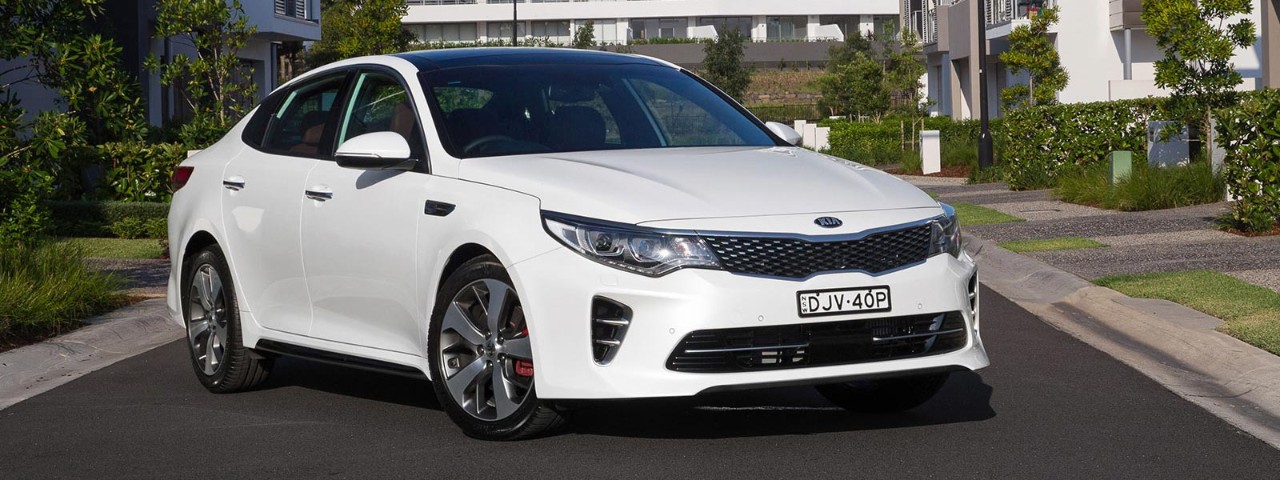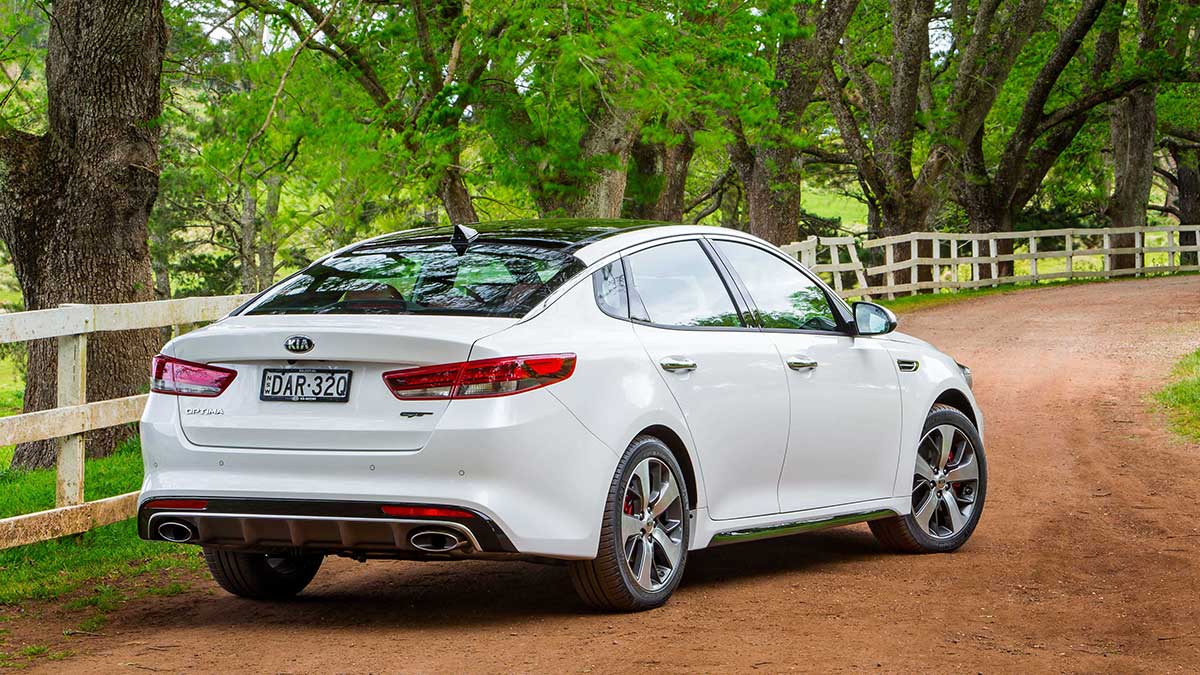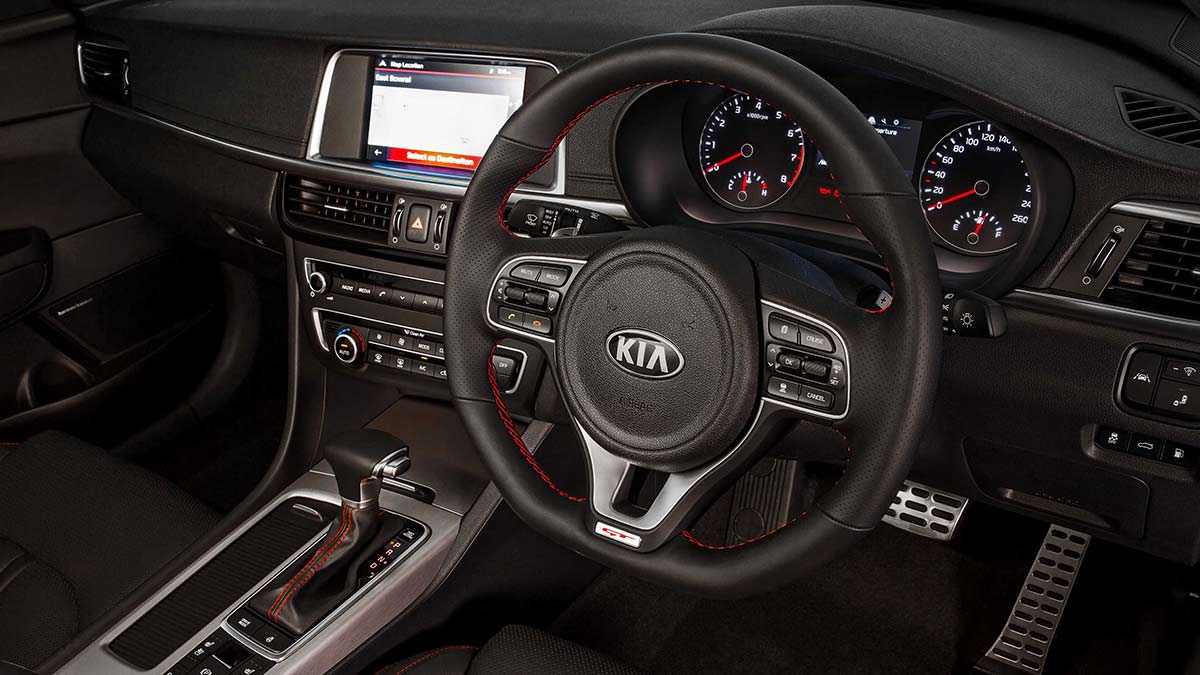The Foton Tunland joins Australia's dual-cab ute market as an affordable mild-hybrid diesel under $50,000, offering strong capability against tough competition.
Kia Optima 2015-2018 used car review

Greg Hill reviews the Kia Optima.
Kia Optima is often under-rated as a roomy, medium-size family sedan, perhaps because consumers haven’t realised Kia’s old reputation for ‘cheap and cheerful’ is well behind it. The fourth-generation Optima, released in late 2015, was a giant step forward in quality for Kia and is among the best in its class for space, standard features, safety and on-road ability.
Its appeal was broadened by having two distinct variants, a 2.4-litre petrol engine in the basic Si grade and a sportier 2.0-litre turbo-petrol engine in the GT version, each with a six-speed automatic transmission.
In this article

High safety levels
Both versions came with excellent safety credentials and have a five-star ANCAP rating. Autonomous emergency braking, lane-departure warning, reversing camera and auto lights/wipers are standard across the range. The GT also gains blind-spot and cross-traffic alerts, lane-change assist, bi-xenon headlights and an adaptive front lighting system.
With its stronger performance and higher equipment level justifying the extra spend, the GT has been the more popular version, so there’s a wider selection on the used market.
On the road, the Si’s 2.4-litre naturally aspirated engine does the job but works hard and tends to be noisier. In the GT, now that the engine issues of the previous model have been rectified, the 2.0-litre turbo’s performance and a good balance of handling and ride deliver an enjoyably involving drive. It has the flexibility to cope easily with the rigours of everyday use and still provide a touch of sporting ability. Slightly higher fuel consumption is a small cost to pay; driven conservatively, Optima returns around 9.0L/100km, but once you take advantage of the turbo engine’s spirited performance it’s likely to climb to 12.0L/100km or more. The harder-working 2.4-litre engine is only fractionally better.
In tune with Australia
Kia’s local engineers did a good job fine-tuning the suspension for Australian conditions, making Optima agile and rather surefooted for its size. The ride can be a touch firm but the car cruises comfortably and corners well. Low-profile tyres provide excellent grip and steering response, however they can cause an occasional thump on rough roads which intrudes into an otherwise quiet cabin.
Optima is relatively large for its class, thanks to efficient use of interior space. It has a more comfortable cabin than most medium sedans, especially in the rear. Boot space is good, and Optima carries a full-size spare wheel.
In April 2018, an upgrade delivered minor cosmetic changes and a little more equipment, including Apple CarPlay and Android Auto. And even a used Optima from 2015 will still have a good portion of Kia’s lengthy seven-year/unlimited-kilometre warranty left.

Keep it oiled
Most problems RACV vehicle inspectors find with Optima are normal wear items and a lack of proper maintenance. It’s important that oil changes, using the correct grade, are done as scheduled, particularly with the turbo engine. An up-to-date service history is always valuable. Naturally, you should look for signs of poor-quality accident repairs. When test driving, check the automatic transmission changes are crisp and smooth, from cold starts right through to full operating temperature.
Early-build Si models had a safety recall due to cracking in the right drive shaft. By now most should have been replaced but check with a Kia dealer to ensure the job has been done.
Optima is not a heavy-duty towing vehicle. The GT’s maximum capacity is a modest 1400 kilograms and the Si can pull up to 1700 kilograms, but both versions have a very limited maximum ball load of just 80 kilograms.


